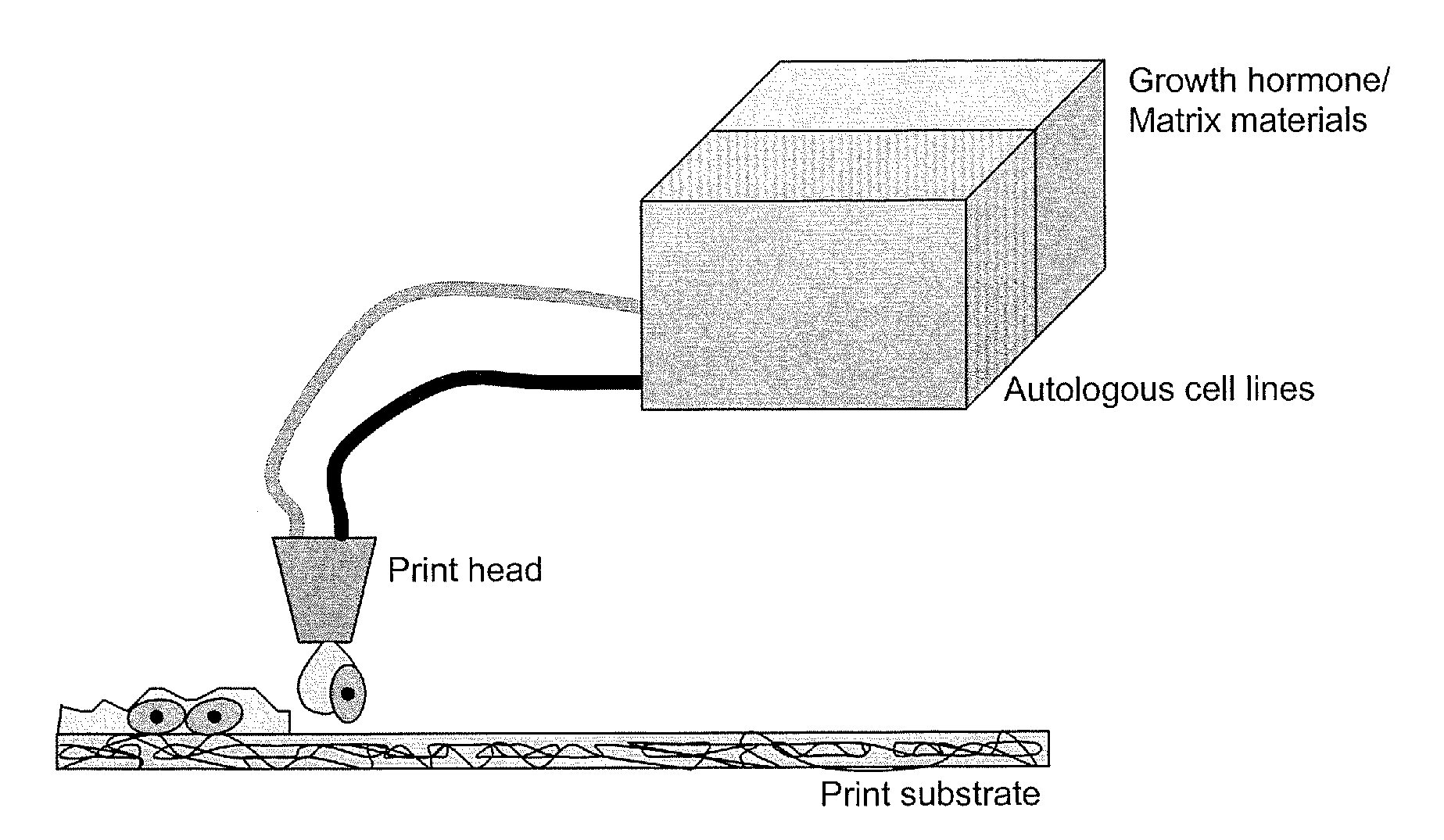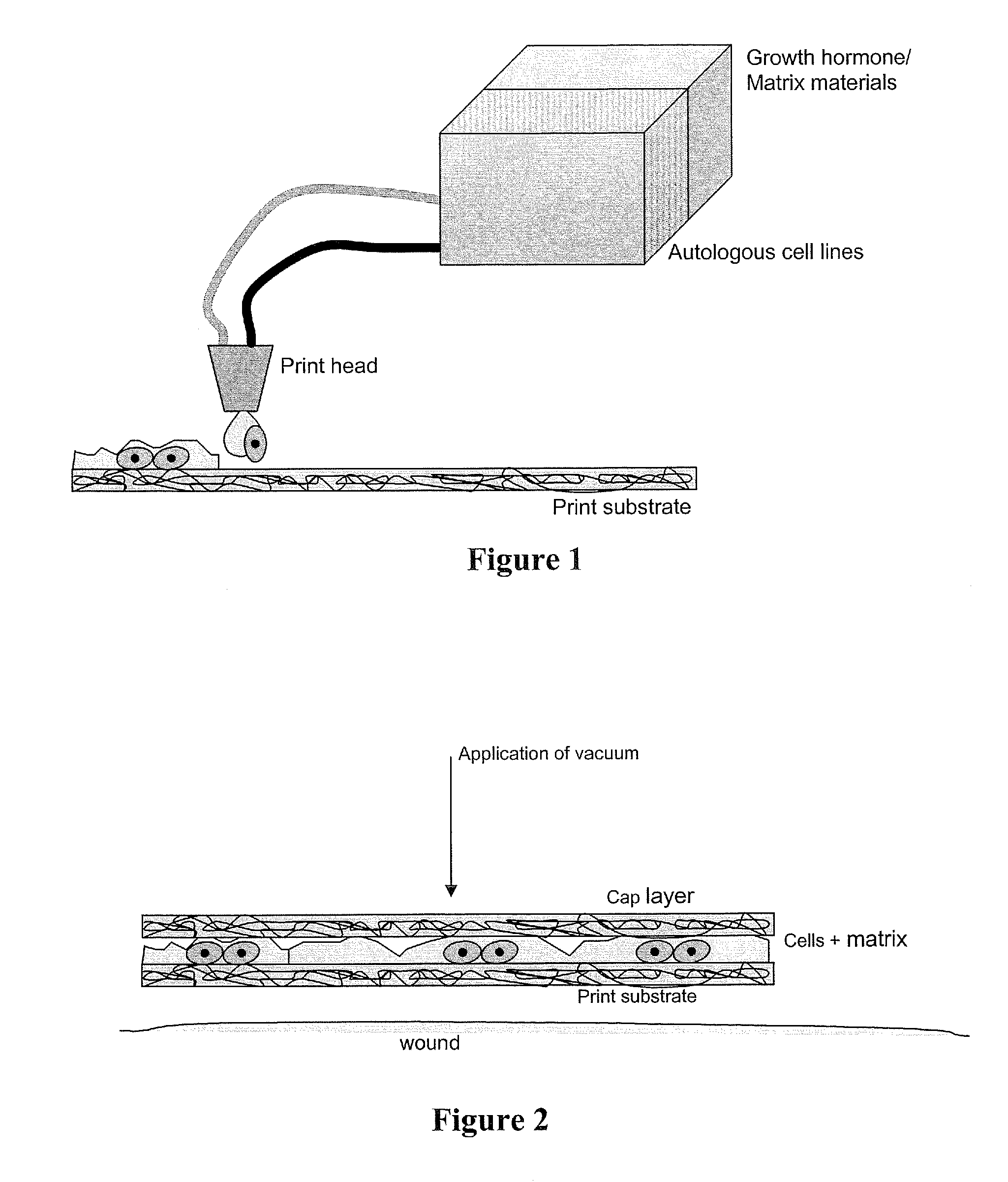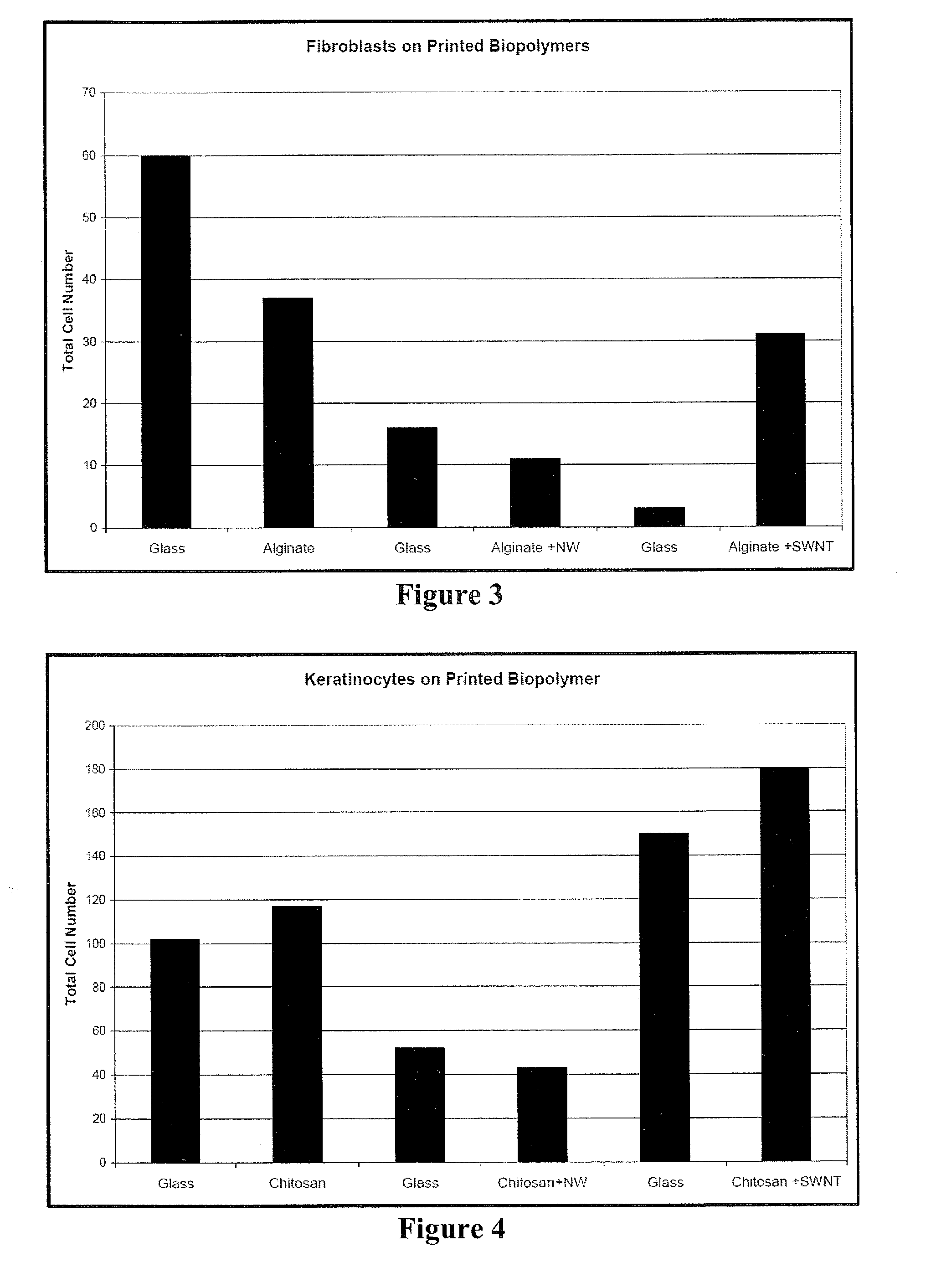Methods and compositions for printing biologically compatible nanotube composites of autologous tissue
a technology of autologous tissue and nanotubes, which is applied in the direction of biocide, skeletal/connective tissue cells, prosthesis, etc., can solve the problems of difficulty in using nanocomposites and electrospinning techniques
- Summary
- Abstract
- Description
- Claims
- Application Information
AI Technical Summary
Benefits of technology
Problems solved by technology
Method used
Image
Examples
example 2
[0105]A Hewlett Packard thermal inkjet printer model 660C was modified and used for printing of biopolymers and live human cells. Modifications to the printer include the ability to move in the two dimensions horizontally as well as positioning vertically. Standard inkjet cartridges were used. The ink was removed and cartridges cleaned by ethanol and water bath sonications.
[0106]Sodium alginate (2.5 mg / 9 ml) stock concentration was prepared in deionized water. Alginate was printed directly as prepared. HipCo single-walled nanotubes (SWNT) (1 mg / ml) in a 1% Pluronic surfactant solution in water were added to the alginate stock by adding 1 ml of nanotube stock to 9 ml of alginate stock. Silver nanowires (NW) were prepared according to published methods. The concentration of nanowires is unknown although it is estimated to be about 10 ug / ml. One ml of the NW stock was added to 9 ml of alginate stock to prepare printable solutions. All polymer solutions of alginate were printed at 5, 10...
PUM
 Login to View More
Login to View More Abstract
Description
Claims
Application Information
 Login to View More
Login to View More - R&D
- Intellectual Property
- Life Sciences
- Materials
- Tech Scout
- Unparalleled Data Quality
- Higher Quality Content
- 60% Fewer Hallucinations
Browse by: Latest US Patents, China's latest patents, Technical Efficacy Thesaurus, Application Domain, Technology Topic, Popular Technical Reports.
© 2025 PatSnap. All rights reserved.Legal|Privacy policy|Modern Slavery Act Transparency Statement|Sitemap|About US| Contact US: help@patsnap.com



